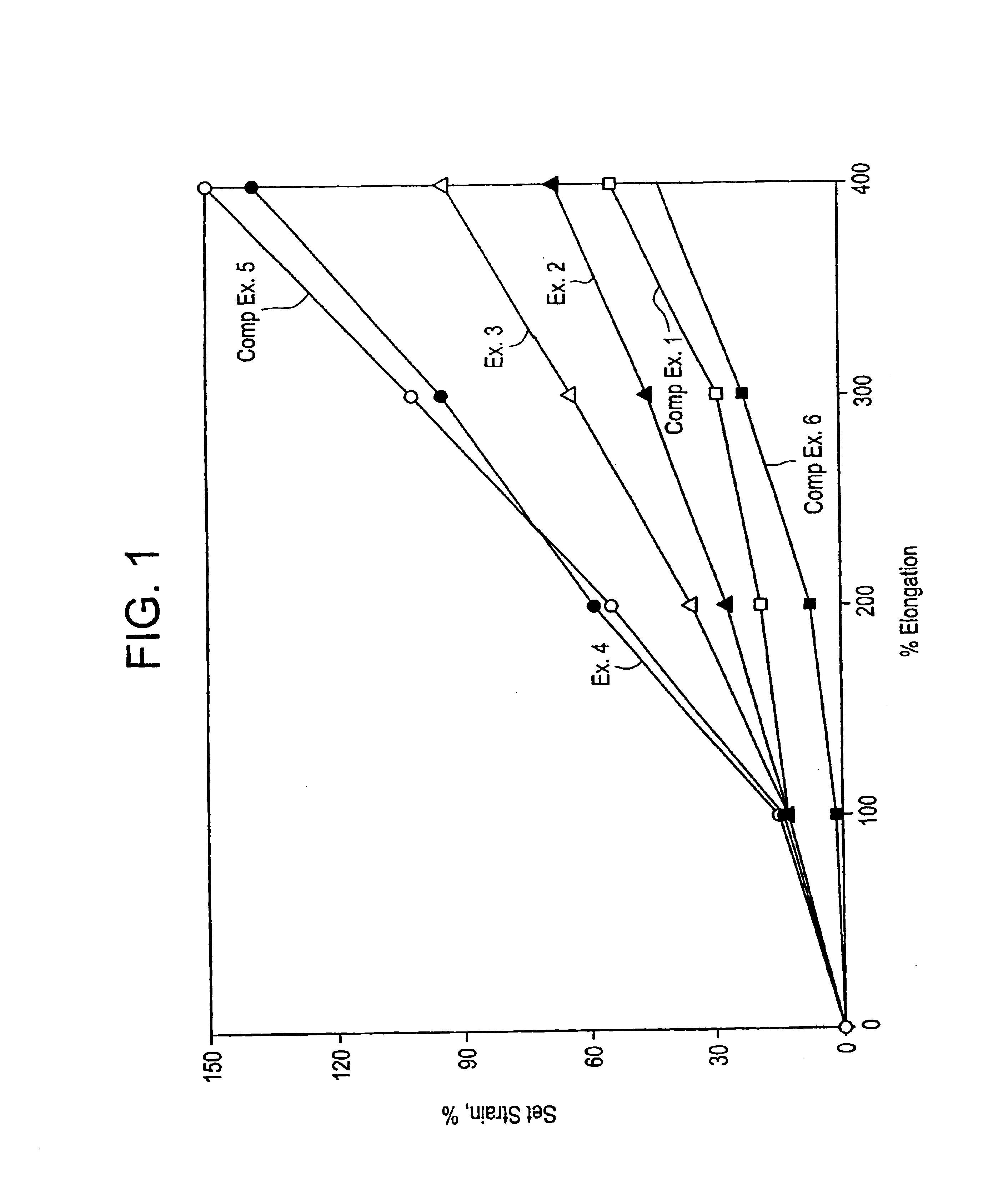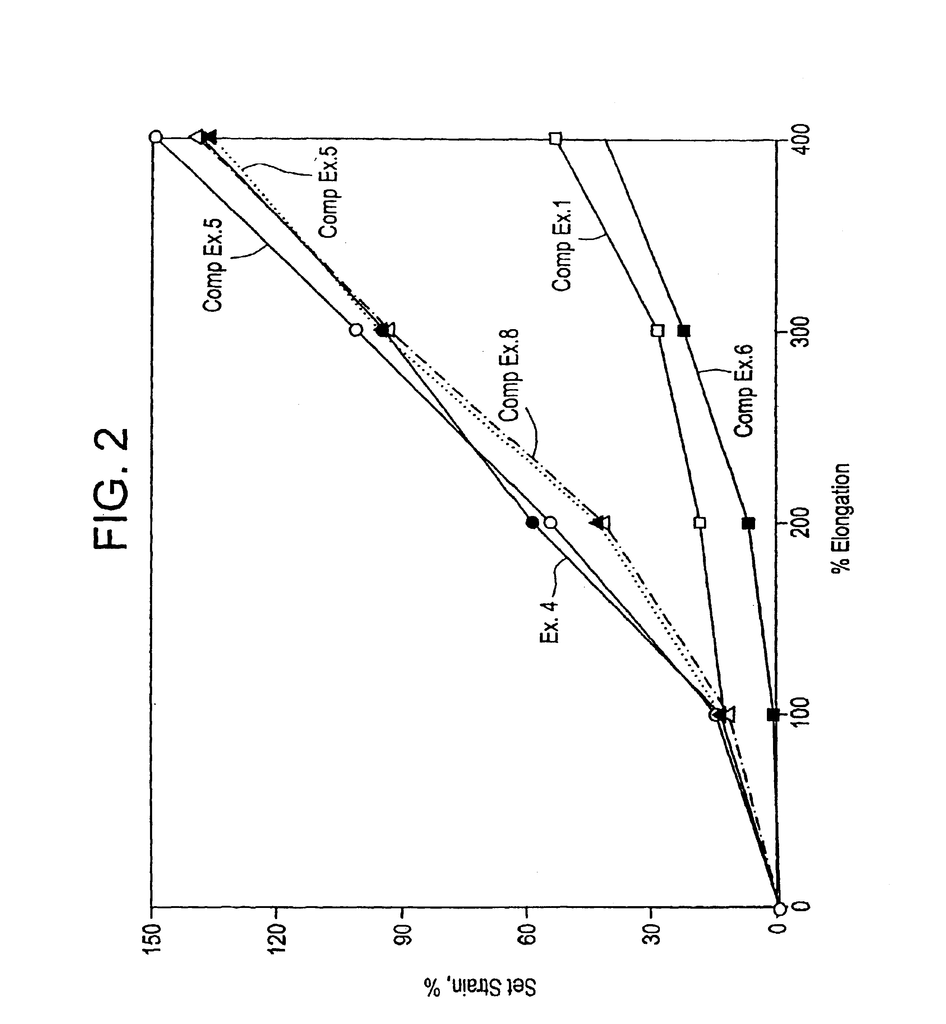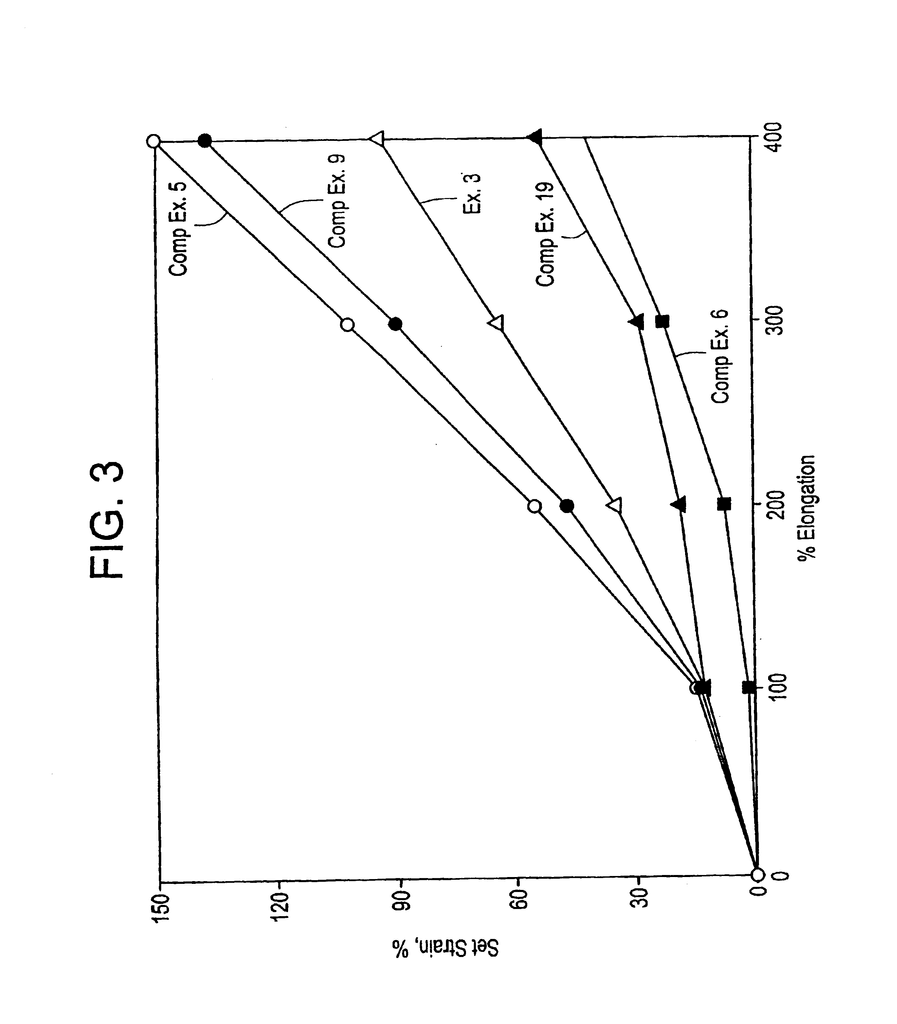Invented by Robert J. Donald, Stephen F. Hahn, James E. Pate, III, USI Corp
The market for compositions containing hydrogenated block copolymers has been growing steadily over the past few years. This is due to the increasing demand for high-performance materials that can withstand harsh environments and provide long-lasting protection. The automotive, construction, and packaging industries are some of the major end-users of these copolymers.
In the automotive industry, hydrogenated block copolymers are used in the production of adhesives, sealants, and coatings. These materials are used to improve the durability and performance of automotive components, such as tires, hoses, and gaskets. They are also used in the production of interior and exterior parts, such as dashboards, door panels, and bumpers. The use of hydrogenated block copolymers in the automotive industry is expected to grow significantly in the coming years, as manufacturers continue to look for ways to improve the safety, performance, and sustainability of their products.
In the construction industry, hydrogenated block copolymers are used in the production of adhesives, sealants, and coatings. These materials are used to improve the durability and performance of building materials, such as concrete, wood, and metal. They are also used in the production of roofing materials, insulation, and flooring. The use of hydrogenated block copolymers in the construction industry is expected to grow significantly in the coming years, as builders and architects continue to look for ways to improve the energy efficiency and durability of buildings.
In the packaging industry, hydrogenated block copolymers are used in the production of adhesives, coatings, and films. These materials are used to improve the strength, flexibility, and barrier properties of packaging materials, such as plastic bags, food containers, and shrink wrap. The use of hydrogenated block copolymers in the packaging industry is expected to grow significantly in the coming years, as consumers continue to demand more sustainable and eco-friendly packaging solutions.
In conclusion, the market for compositions containing hydrogenated block copolymers is expected to grow significantly in the coming years, driven by the increasing demand for high-performance materials in various industries. The automotive, construction, and packaging industries are some of the major end-users of these copolymers, and their applications are expected to expand further in the future. As technology continues to advance, we can expect to see more innovative uses for hydrogenated block copolymers in a wide range of industries.
The USI Corp invention works as follows
Flexible hydrogenated block polymers are suitable for a wide range of applications, including films, sheets, profiles, coatings and injection-molded products. They can also be used to make blow-molded or rotationally molded items, as well as pultruded materials.
Background for Compositions containing hydrogenated block copolymers, and their end-use applications
Partially hydrogenated block copolymers of vinyl aromatic and conjugated dienes such as hydrogenated styrene-butadiene-styrene copolymers are well known in the art. U.S. Pat. Nos. Among the various hydrogenated blocks copolymers are Nos. The term partially hydrogenated is used to describe the hydrogenation only of the diene part of the block copolymer, or the aromatic hydrogenation at 90 percent or lower. These partially hydrogenated copolymers, although they have been tested for various applications, suffer from one or several shortcomings. They include low heat resistance and physical properties. These shortcomings have been addressed by increasing hydrogenation in the aromatic ring. However, polymer scientists contend that fully hydrogenated styrene-butadiene-styrene copolymers have no useful properties at elevated temperatures, even if only slightly elevated. Thermoplastic elastomers, second edition, 1996, pages 304, lines 8-12, states: “Polystyrene is the preferred choice for any amorphous block copolymer of hydrocarbons.” This is evident in the case where the VCH-EB/VCH polymer has been fully hydrogenated. Hydrogenation reduces the interaction parameter so much that even at slightly higher temperatures, polymers lose all strength. They appear homogeneous at normal melt temperatures.
Hydrogenated diblock copolymers are difficult to process because they have low melt strength and viscosity. Due to their poor tensile characteristics, diblocks have additional disadvantages. They are also not suitable for flexible materials. Materials made of hydrogenated diblocks, on the other hand, tend to be rigid and brittle.
Blends of partially hydrogenated block copolymers and other polymers have also been known. Blends of cyclic (co-)polymers were attempted, as described in EP-0726291, which blends cyclic (co)polymers with vinyl aromatic/conjugated diene block copolymers. It is well known that cyclic olefin polymers (COCs) have good heat distortion temperature, UV stability, and processingability. These copolymers have poor impact resistance. “Blends of COCs with partially-hydrogenated block copolymers suffer from an imbalance in physical properties due the lack of aromatic hydrogenation within block copolymers.
Therefore there is a continuing need for compositions containing fully or substantially hydrogenated block copolymers that have sufficient viscosity and melting strength to facilitate processing, are suitable for elastomeric uses, and have an ideal balance of physical characteristics.
The patent states that “Additionally uses are desired for clear, substantially hydrogenated block polymers of vinyl aromatic monomers and conjugated diene monomers and polymer blends therefrom, which are processed by conventional manufacturing techniques and possess useful properties at both standard and elevated temperature.
One aspect of the invention is directed at compositions comprising partially or fully hydrogenated block polymers and their various applications. The hydrogenated blocks copolymer comprises at least two blocks of hydrogenated monomerized vinyl aromatic monomer (hereafter referred as hydrogenated vinyl aroma polymer blocks) and at least one hydrogenated monomerized conjugated diene monomer (hereafter referred as hydrogenated conjugated dene polymer block), wherein the flexible fully hydrogenated copolymer has:
Compositions containing hydrogenated block copolymers with these Mn and hydrogenation characteristics are transparent at visible wavelengths, and have excellent properties both at standard temperatures and at elevated temperatures. Compositions containing hydrogenated block copolymers with high hydrogenation levels, but limited Mn, exhibit superior properties and processing characteristics compared to hydrogenated copolymer formulations in the prior art. These polymers, as well as blends of them, are ideal for many applications, including thermoformed articles and extruded products, as they have a high glass transition temperature and low water absorption.
DESCRIPTION DU DRAWINGS
FIG. “FIG.
FIG. “FIG.
FIG. “FIG.
DESCRIPTION OF PREFERRED EMBODIMENTS.
One aspect of the invention is directed towards applications for flexible hydrogenated block copolymers. Hydrogenated copolymers can be prepared by hydrogenating block copolymers made from vinyl aromatic monomer or conjugated diene.
The vinyl aromatic monomer has a formula of:nnwhere R? Ar can be hydrogen, alkyl or phenyl. It may also contain functional groups like halo-, amino-, hydroxyl-, carboxyl or cyano. Ar is more preferably phenyl, or alkyl-phenyl. Phenyl is the most preferred. Vinyl aromatic monomers that are typical include styrene (alpha-methylstyrene), vinyl toluene isomers, including paravinyltoluene isomers, all vinyl isomers, such as propyl and butyl isomers, vinyl biphenyl and vinyl naphthalene. The block copolymer may contain more than one polymerized vinyl aroma monomer. In other words, the block copolymer can contain a polystyrene block and a poly-alpha-methylstyrene block. “The hydrogenated vinyl-aromatic block can also be a polymer, provided that the hydrogenated vinyl-aromatic portion of the copolymer is at least 50% weight percent.
The conjugated diene can be any monomer with 2 double bonds. Such monomers include for example 1,3-butadiene, 2-methyl-1,3-butadiene, 2-methyl-1,3 pentadiene, isoprene and similar compounds, and mixtures thereof. The block copolymer may contain more than one polymerized conjugated diene monomer. The block copolymer may contain both a polybutadiene and polyisoprene monomer.
The conjugated diene block can be made from materials that are amorphous or crystallisable after hydrogenation. Hydrogenated blocks of polyisoprene remain amorphous. However, hydrogenated blocks of polybutadiene can either be amorphous (amorphous) or crystallizable (crystallisable), depending on their structure. The 1,2 configuration of polybutadiene is the one that hydrogenates into the equivalent of 1-butene repeat units, while the 1,4 configuration hydrogenates into the equivalent ethylene repeat units. When hydrogenated, polybutadiene with a minimum of approximately 40% 1,2-butadiene, based upon the weight, produces amorphous, low-glass transition temperature blocks. Hydrogenation of polybutadienes blocks with less than 40 weight percent 1,2-butadiene, based upon the weight, produces crystalline blocks. It may be necessary to use a crystalline polymer (to increase solvent resistance) or a more flexible amorphous block, depending on the application. In certain applications, the copolymer block can contain multiple conjugated diene blocks, for example, a polybutadiene and polyisoprene. The conjugated polymer block can also be a copolymer containing a conjugated diene. In this case, the conjugated diene component of the copolymer must account for at least 50% of the total copolymer. The conjugated-diene polymer can also be a block copolymer consisting of more than one conjugated-diene. For example, a copolymer containing butadiene with isoprene.
Other polymeric blocks can also be included in hydrogenated block copolymers according to the present invention.
A block” is defined here as a polymeric copolymer segment that exhibits microphase seperation from another polymeric copolymer segment with a different structure or composition. The incompatibility between the polymeric segments of the block copolymer is the cause of microphase separation. Glass transition temperatures can indicate the separation of segments. “Block copolymers – Designer Soft Materials” by PHYSICS NOW, February 1999, pages 32 to 38, discusses microphase separation.
The flexible hydrogenated copolymers have a weight-ratio of hydrogenated conjugated diene polymer to hydrogenated vinyl aromatic polymer of greater 40:60. This weight ratio is typically greater than 40 to 60; preferably greater than 45 to 55 to 90 to 10, more preferably greater than 50 to 50 to 85 to 15, and most preferably greater than 60 to 40 to 80 to 20 based on total weights of the hydrogenated diene block and hydrogenated aromatic block. The weights of hydrogenated vinyl-acid polymer blocks and hydrogenated conjugated diene block(s) are typically at least 80%, preferable at least 90%, and most preferably, at least 95% of the total weight for the hydrogenated copolymer.
The flexible hydrogenated blocks copolymers that are used in the invention are made by hydrogenating block copolymers, including multi-blocks, tapered blocks, star block copolymers, such as SBSBS, SISSIS, SISBS (where S is polystyrene and B is polybutadiene) and SIS. The block copolymers include at least one segment of vinyl aromatic polymer blocks on both ends. However, the block copolymers can contain any number additional blocks. These blocks may be connected at any point along the triblock polymer spine. Linear blocks include, for example, SBS, SBSB and SBSBS. Copolymers can be branched by attaching polymer chains at any point on the copolymer’s backbone. Blends of all the above block copolymers, as well as blends with their homopolymer counterparts can be used. A hydrogenated SBSBS copolymer or a polystyrene-based homopolymer can be blended together with a SBSBS block co-polymer. In the production of block polymers, residual diblock copolymers are possible.
The total average molecular mass (Mnt), as used in the present invention, is usually between 30,000 and 45,000. It’s more preferable to be around 55,000. Most preferred to be anywhere from 60,000-150,000. Typically, this would range from 140,000 to 135,000. Mn is measured using gel permeation (GPC) as it appears throughout the specification. The molecular mass of the block copolymer is dependent on the molecular masses of each hydrogenated polymeric block.
Click here to view the patent on Google Patents.



